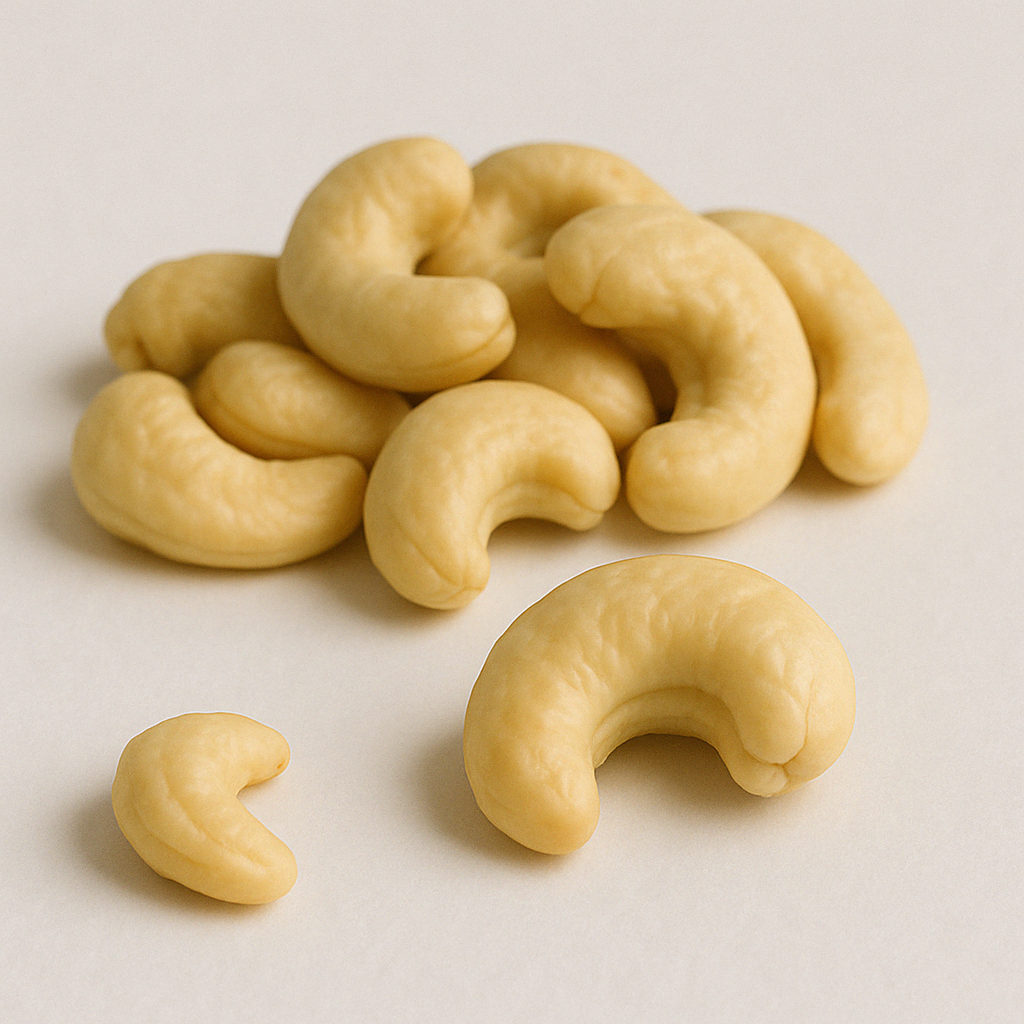About this market
About
History
Cashew cultivation began in Vietnam during the 1980s, mainly in southeastern provinces like Binh Phuoc and Dong Nai. Initially seen as a poverty-reduction crop for rural farmers, the cashew sector quickly evolved into a major export industry. By the early 2000s, Vietnam invested heavily in modern processing machinery and began importing raw nuts to meet increasing global demand. In 2006, Vietnam overtook India as the world's top cashew exporter. Today, Vietnam processes over 1.5 million metric tons of raw cashews annually, with exports reaching over 100 countries.
Production Regions
Although Vietnam imports most of the raw nuts it processes, domestic cultivation still plays an important role:
- Binh Phuoc Province: The country’s main cashew-growing area, known for consistent yields and favorable soil conditions.
- Dong Nai and Tay Ninh: Secondary production zones with significant smallholder involvement.
- Central Highlands (Dak Lak, Dak Nong): Expanding cashew plantations benefiting from dry seasons and new investments.
Growing Conditions
Cashew trees in Vietnam thrive in warm, dry conditions with well-drained soils:
- Climate: Subtropical and tropical savanna with a marked dry season favorable for flowering and fruit set.
- Temperature: Optimal range between 24–30°C, with good drought tolerance.
- Rainfall: Requires 1,000–1,500 mm annually, with good drainage to avoid root rot.
- Soil: Well-drained sandy loam or red basaltic soils with pH 5.0–6.5.
- Altitude: Typically grown from 100 to 800 meters above sea level.
Harvesting Process
Cashew harvesting is largely manual in Vietnam, with labor-intensive methods applied to ensure quality:
- Harvest Time: Cashew apples and attached nuts fall to the ground naturally when ripe.
- Collection: Farmers collect the fallen nuts and separate them manually from the apples.
- Drying: Nuts are sun-dried on mats or concrete floors to reduce moisture before storage or sale.
Cultivation Method
Vietnam combines smallholder farming with industrial-scale processing:
- Planting: Traditional and grafted varieties are used depending on region and yield goals.
- Fertilization: Balanced application of NPK and organic matter to maintain productivity.
- Pest Management: Integrated pest management is applied to control tea mosquito bug and powdery mildew.
- Irrigation: Minimal use; most regions rely on natural rainfall, though drip irrigation is emerging.
- Training & Pruning: Conducted post-harvest to maintain airflow and stimulate new growth.
Supply Chain
Vietnam has one of the most developed cashew supply chains globally:
- Raw Nut Sourcing: Major importer of RCNs from Africa (over 60% of processing inputs).
- Processors: Over 500 processing facilities ranging from small mills to fully automated factories.
- Exporter Profiles: Leading exporters are vertically integrated and certified for food safety and traceability.
- Cold Chain & Storage: Not commonly used for raw nuts but essential for kernel exports.
Local Logistics
The logistics network is robust and export-ready:
- Transport: Raw nuts are transported by truck to processing centers; finished kernels are shipped via sea freight.
- Ports: Ho Chi Minh City and Hai Phong are the main export gateways.
- Packaging: Vacuum-sealed bags and nitrogen-flushed containers are used to maintain freshness.
Regulations and Certifications
Vietnam adheres to international standards to maintain market access:
- Food Safety Compliance: HACCP and ISO-certified processing facilities.
- Traceability: Increasingly adopted due to US, EU, and Japanese market demands.
- Certifications: BRC, GlobalG.A.P., and Fair Trade certifications available among top-tier processors.
Quality Standards
Vietnamese cashew kernels are graded and standardized:
- Kernel Size: Common grades include WW320, WW240, and WW180 (larger and more premium).
- Color & Texture: White or pale ivory with minimal scorching or blemishes.
- Moisture Content: Typically under 5% for kernels.
- Packaging: Bulk (22.68 kg vacuum packs) and retail-ready packs (100g to 1kg).
Trade Terms
Vietnamese exporters are experienced in global trade:
- MOQ: Typically 1 full container load (around 18–19 MT for kernels).
- Incoterms: FOB (Ho Chi Minh), CIF (Rotterdam, Dubai, New York), EXW available for domestic pickup.
- Payment Methods: L/C, T/T, and increasingly online escrow or trade finance platforms.
Environmental and Social Impacts
The industry faces both positive and challenging impacts:
- Employment: Supports hundreds of thousands of rural jobs, especially for women in processing.
- Sustainability Issues: Heavy reliance on imported raw nuts raises carbon footprint concerns.
- Land Use: Domestic cultivation often competes with rubber and pepper plantations for land.
- Waste Management: Shell and apple waste management is improving, with CNSL and cashew apple products under development.
Uses
Vietnamese cashew nuts are valued across multiple categories:
- Snacking: The primary use, especially for premium roasted and flavored kernels.
- Industrial Use: Used in confectionery, cereals, vegan cheese, and energy bars.
- By-products: Cashew shell oil (CNSL) used in brake linings, resins, and paints.
Export of 캐슈넛 from 베트남
Export overview
Export trend
Verified manufacturers











